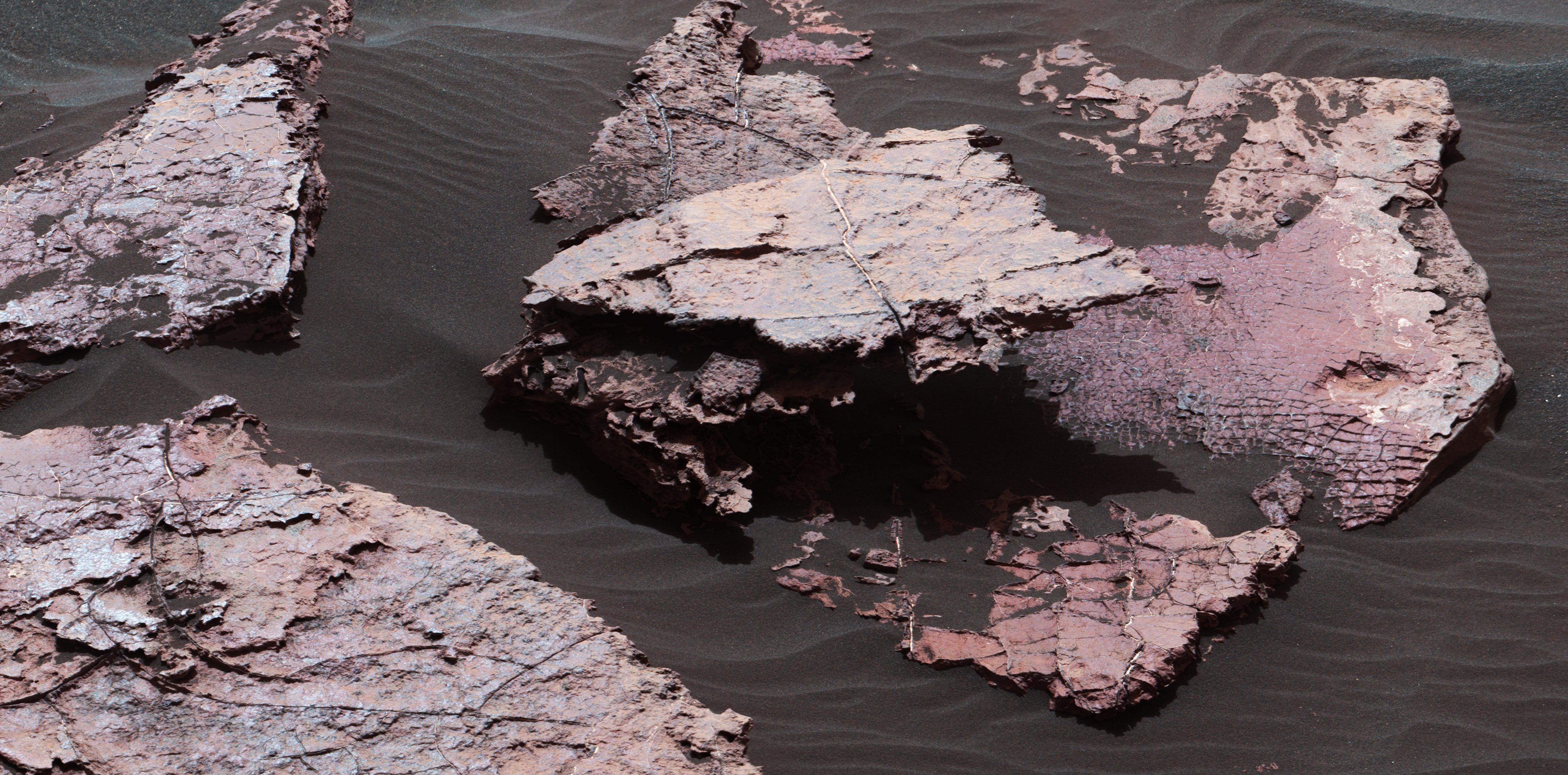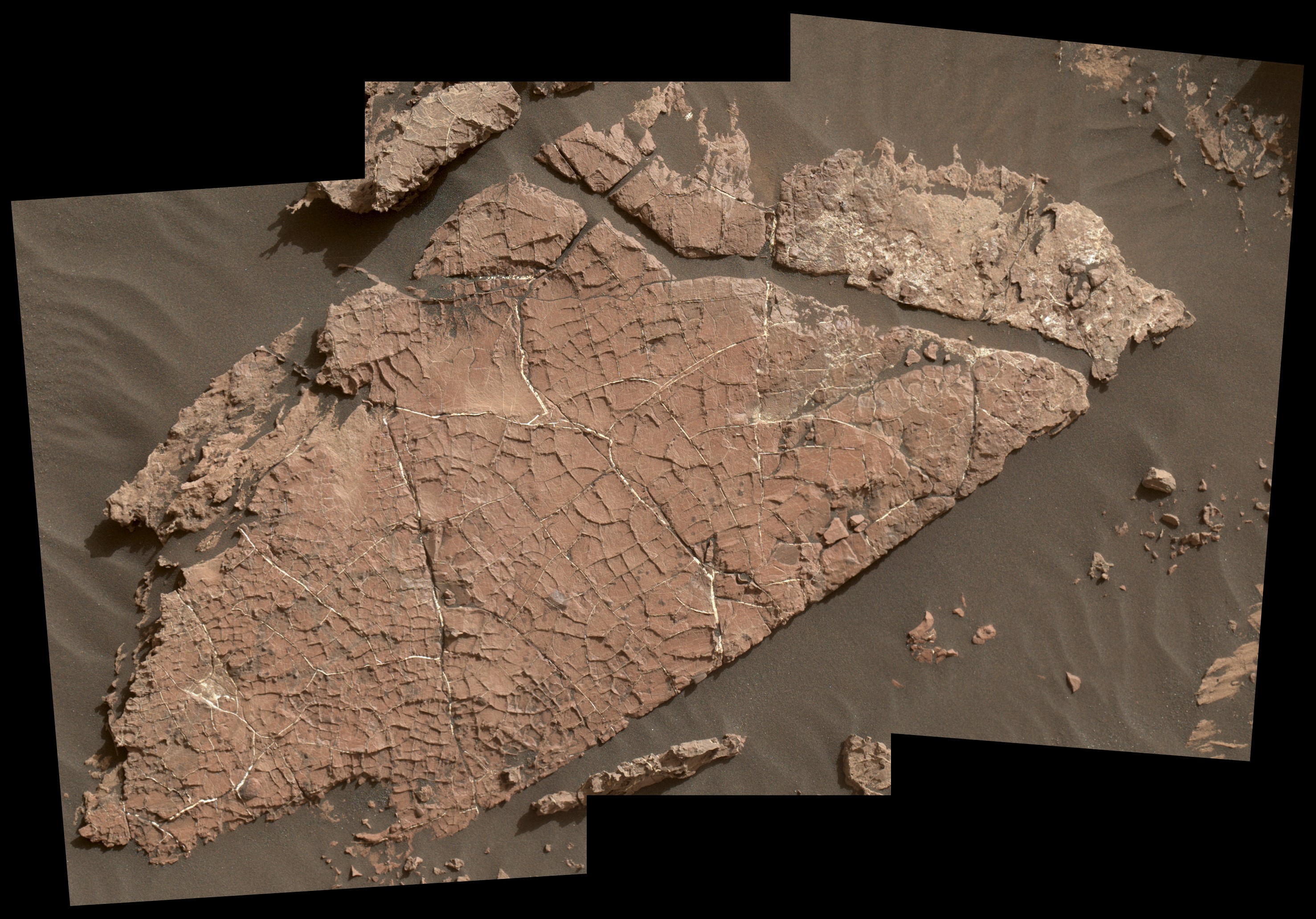Curiosity may have killed the cat, but it also may have just discovered evidence of dried bodies of water on the surface of Mars.
In the recent weeks, scientists have used NASA’s Curiosity Mars rover to investigate a Martian slab of rock named “Old Soaker”. This slab of rock is cross-hatched with shallow ridges that most likely originated as cracks in drying mud. These mud cracks (technically referred to as Desiccation Cracks) would be the first discovered by the Curiosity rover if this interpretation proves to be correct.
Confirmation of these Desiccation Cracks would serve as evidence that these sediments were deposited during an ancient era where Mars was wetter and then proceeded to dry out. With some scientists estimating that these martian bodies of water existed about 3 Billion years ago, it gives way to speculation that life could’ve existed on Mars billions of years ago during this different, more habitable climate.
Along with these cracks that are likely due to drying, other types of evidence of a wetter climate have been discovered in the area. Layers of sandstone interspersed with the mudstone layers and the presence cross-bedding, the layering pattern formed where water was flowing more vigorously near the shore of a lake or from windblown sediment.
For now, the Curiosity rover will continue on its way up Mount Sharp while Scientists continue to look into this area and hopefully make definitive conclusion in the near future!





